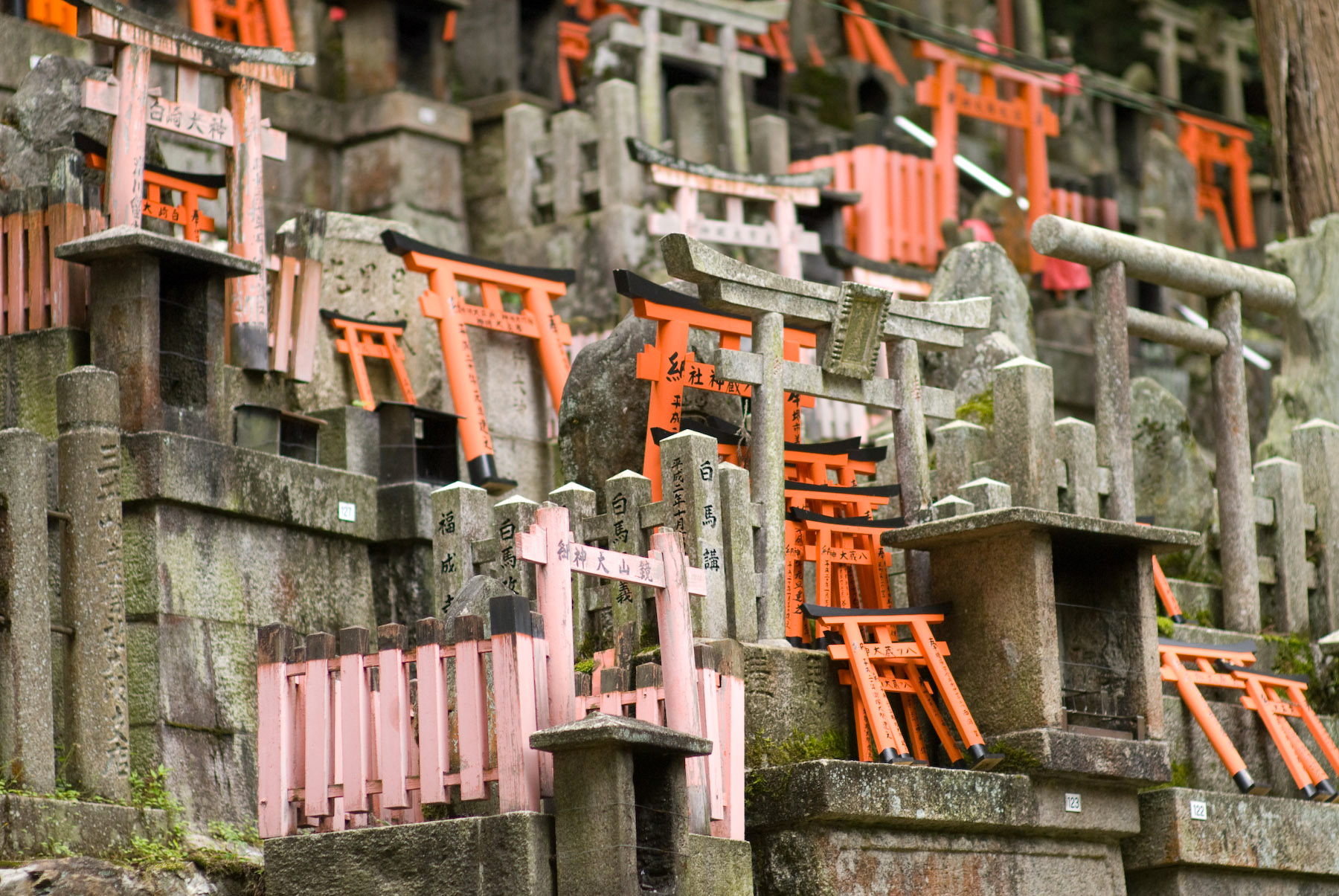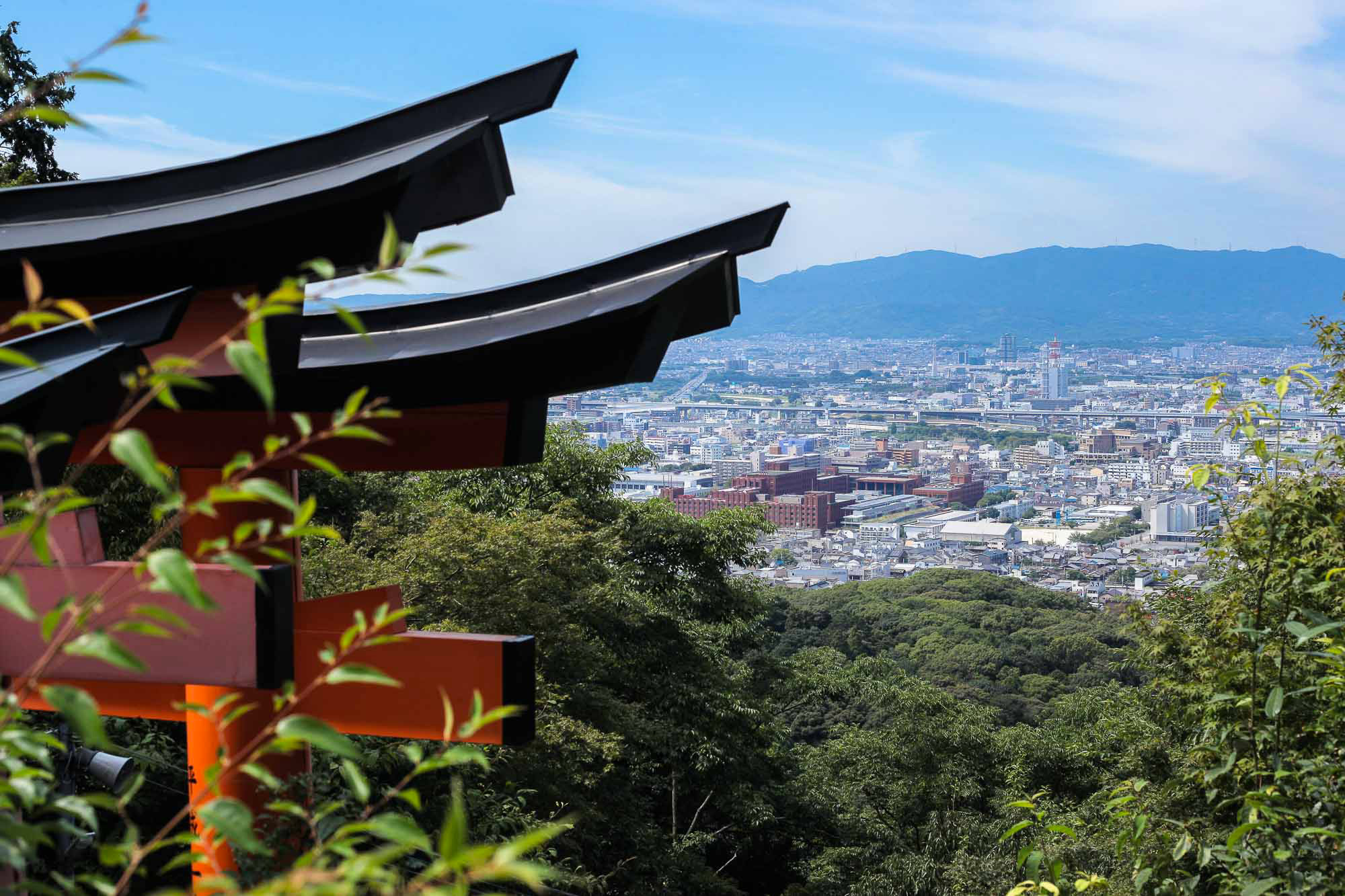Japan Travel: Fushimi Inari
Fushimi Inari

Photo Credits: japanitalybridge.com
Thousands of vermilion gates
A trail made of many vermillion torii, one after the other: this is the most recognizable symbol of the Shinto shrine Fushimi Inari Taisha (伏見稲荷大社). The complex is located in Fushimi ward, south of Kyoto, and it is the most important of several thousands of shrines dedicated to the kami Inari. Inari is the Shinto deity protector of the prosperity and wealth of crops, especially rice.
Reaching this holy place is very simple as it is located opposite the JR Inari station. Alternatively, you can walk a short distance from Fushimi Inari Station served by Keihan Main Line
This is a temple of ancient origins and its foundation dates back to before 794, when Kyoto became capital. Initially built on the Inariyama hill, southwest of Kyoto, it was re-located in 816 on the request of the monk Kourai. The current main structure of the temple was built in 1499.

Photo Credits: japanitalybridge.com
At the entrance there is the Romon Gate which was donated in 1589 by the famous leader Toyotomi Hideyoshi (he was a famous samurai and daimyō of the Sengoku period, founder of the Toyotomi Clan. Succeeding his master Oda Nobunaga in the work of reunification of Japan, he is considered as the second of the three “great unifiers”.)
Beyond the Romon Gate stands the main hall of the shrine (honden) where visitors should make a small offer as a sign of respect for the deities enshrined here.
At the back of the main land of the shrine there is the entrance to the hiking trail made of torii ( 鳥居 traditional Japanese gateway to a jinja, shinto shrine). The trail begins with two dense rows of parallel gates called Senbon Torii (“thousands of torii gates”). The torii straddle a network of trails leading into the flourishing forest of the sacred Mount Inari (Inari-yama), which stands at 233 meters above sea level. Each gate was donated by individual worshippers or companies and has an inscription indicating the name of the donor and the date of the donation itself.

Photo Credits: masterfile.com
The Fox
Along the trails there are the statues of sitting foxes (Kitsune 狐), especially placed in north-east locations, that have the role of guardians whose duty is to prevent the demoniac energy from entering the earthly world. Foxes are also considered Inari’s messengers. According to tradition, Inari used to live in the mountains during the winter, coming down in spring during the growing season. After the harvest, Inari would once again return to his winter residence. Every season foxes approached humans’ houses in the same way and, over time, they were recognized as natural messengers of the god.

Photo Credits: japanitalybridge.com
They are a recurring subject and an element of particular importance for the Japanese culture. In fact, they represent sacred and mysterious creatures endowed with a great intelligence and strange supernatural powers that they develop with age. Their main skill is to change shape taking human form (as they often appear in the form of a beautiful woman). Another power they are said to have is that of the Kitsunetsuki (狐憑き o 狐付き) or else, the ability to possess human beings. It was believed that a fox was able to enter the body of its victims, usually young women, through a nail or their chest, thus feeding on their vital energy living inside their bodies.
Inari’s kitsune are white, a color considered to be auspicious. They possess the power to ward off evil, and sometimes act as guardian spirits. In addition to protecting the shrines of Inari, they protect the locals by acting as a scarecrow against the evil nogitsune, fox spirits who are not in the service of Inari. Black foxes and nine-tailed foxes are also believed to bring good luck.
Some of the foxes along the trails hold a key in their jaws that represents the key to the rice granary.

Photo Credits: regex.info
Up to the Inari-yama
Reaching the top of the mountain takes about 2 or 3 hours, and along the way there are many smaller shrines with piles of miniature torii donated by visitors on lower budgets. There are also some restaurants that offer local themed dishes such as Inari Sushi and Kitsune Udon (“Fox Udon”), both with pieces of aburaage (fried tofu), which is said to be the favorite food of foxes.

Photo Credits: crafttabby.com
After the first half hour of walking, the torii gates begin to gradually decrease until they reach the Yotsutsuji crossing, about halfway up the mountain. From here you can enjoy a splendid view of Kyoto.
At this point the trails divides into a circular path to the top.
Share this:
- Click to share on Facebook (Opens in new window)
- Click to share on Twitter (Opens in new window)
- Click to share on Tumblr (Opens in new window)
- Click to share on Pinterest (Opens in new window)
- Click to share on Telegram (Opens in new window)
- Click to share on WhatsApp (Opens in new window)
- Click to share on Reddit (Opens in new window)
- Click to print (Opens in new window)






